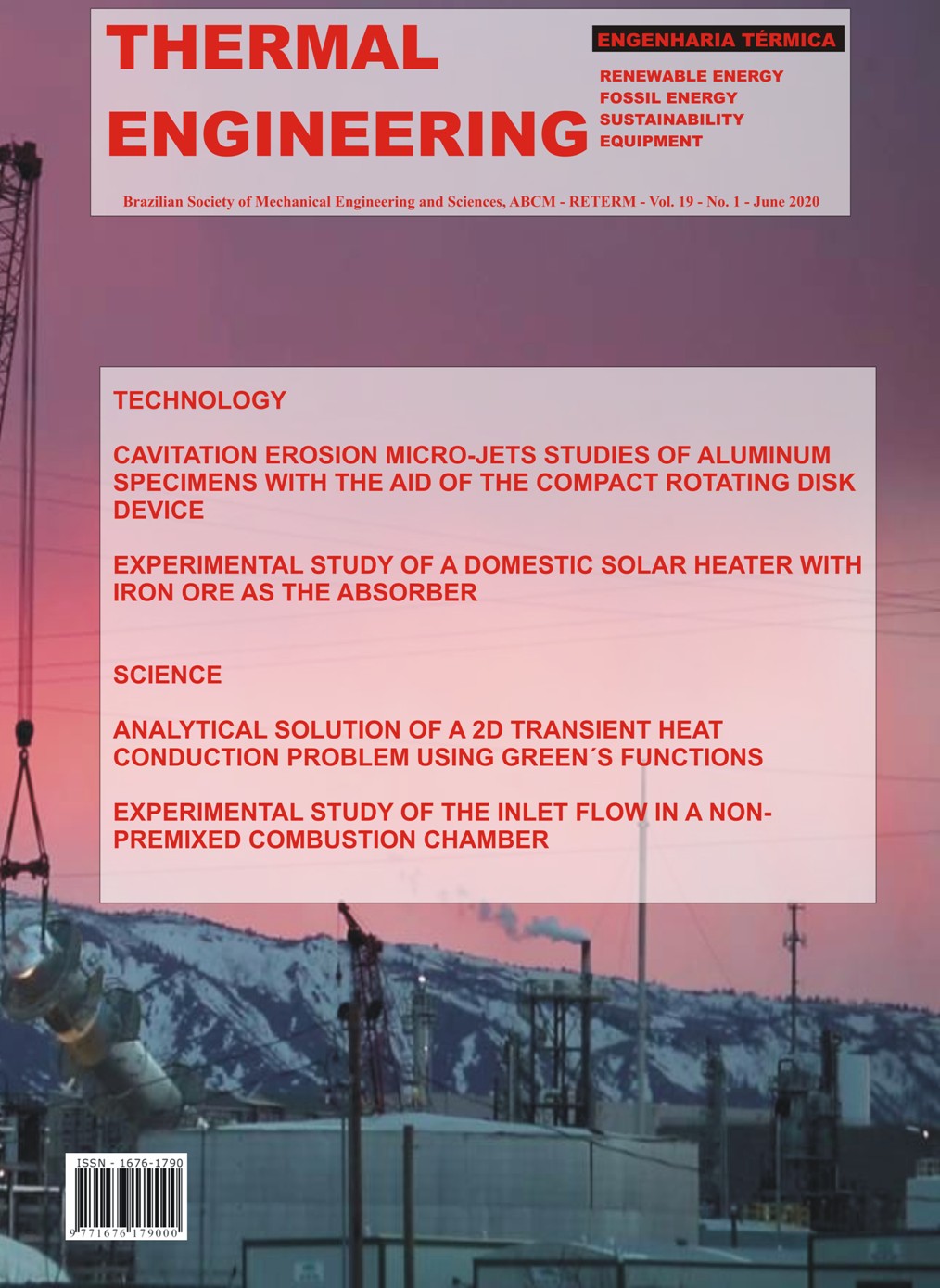THREE-DIMENSIONAL NUMERICAL SIMULATION OF A VERTICAL THERMAL TANK
DOI:
https://doi.org/10.5380/reterm.v19i1.76440Keywords:
thermal reservoirs, numerical simulation, computational grid, thermal stratificationAbstract
In this study, the results obtained by the numerical simulation presented in this paper are compared with the results obtained experimentally by Oliveski (2000) for a vertical cylindrical thermal reservoir with internal diameter of 0.42m and internal height of 0.57m (79L). In the simulation using Ansys software, for the same parameters of the problem, a study to evaluate the degree of mesh refinement was performed based on the methodology used by Adolfo (2015). The boundary conditions adopted were: Flow: Transient; Buoyancy Model: Boussinesq Approximation; Step of time used: 1s; Wall Condition: Top Non slip / adiabatic; Base: h = 06 [Wm ^ 2 / K]; Lateral: h = 10 [Wm ^ 2 / K]; Initial tank conditions: Null velocity field and initial temperature of approximately 355.15 K. Total simulated flow time: 18,000 s. For the external temperature, contour condition used in the simulation, the ambient temperature was used as a function of time through the graph provided by Oliveski. Three meshes were compared based on the methodology used by Adolfo (2015) in his studies. These have 1,512,143 and 7,997,663, 851,837 and 4,379,079, 271,898 and 1,308,368, number of nodes and elements, respectively. For the turbulence model adopted, the SST (Shear Stress Transport) model was used. The simulations took approximately 58 days to complete. The residue sought in the iterations was at least 0.001, with a maximum of 100 iterations for each time step. For the behavior of the temperature field in the tank over time the formation of the stratified temperature profile was observed, as described in Oliveski's work, and also that the thermal stratification occurs only in the lower region and that in the upper region the water becomes temperature is almost constant. In terms of mean temperature in the tank, the simulation is very close to the results shown by Savicki (2007). However, in terms of temperature profile along the height of the tank, this behavior is shown to be different. Another fact is that the height of the thermocline found in this simulation was considerably higher than that shown in the Savicki simulation. Therefore, the results obtained were validated with the experimental results presented by Oliveski and the numerical results presented by Savicki. It has been confirmed that the mesh with the second refinement level is already sufficiently capable of generating satisfactory results.
Downloads
Published
How to Cite
Issue
Section
License
Direitos Autorais para artigos publicados nesta revista são do autor, com direitos de primeira publicação para a revista. Em virtude da aparecerem nesta revista de acesso público, os artigos são de uso gratuito, com atribuições próprias, em aplicações educacionais e não-comerciais.



